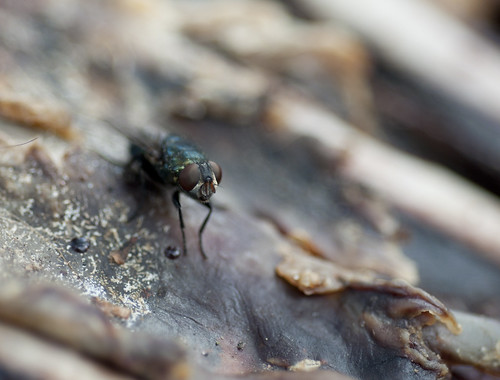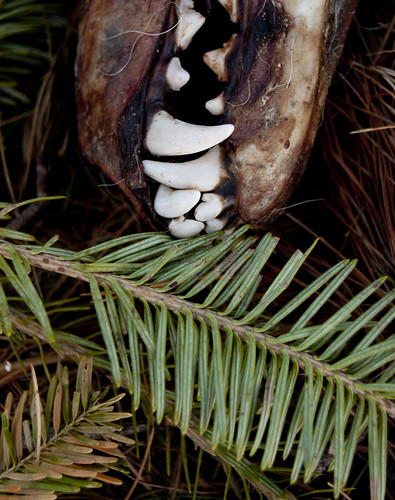It's been a week of record-setting temperatures here in Marquette! Over the weekend, our thermometer read 80°F – in the shade. The warm weather is more than a little strange and alarming, but it's been thoroughly enjoyable, too – and the insects agree! As soon as temperatures reached around 45°F, the flies began to emerge from their winter torpor. They quickly found the coyote carcass in our backyard, and soon, flies of all shapes and sizes began to show up.
Blow flies (Calliphoridae) can detect the scent of carrion from a mile away. As soon as a fly discovers a dead animal, it releases a pheromone that alerts other flies and they, too, arrive to feed and mate. Female blow flies will eat and lay eggs simultaneously; I observed this, and it was both disgusting and fascinating. Eggs tend to be deposited in the wetter, more protected areas of a carcass; in the case of the coyote, mountains of eggs were laid inside the chest cavity, where the internal organs had liquefied.
By yesterday afternoon, some of the eggs had hatched, and tiny maggots were visible, and by this morning, the larvae had disappeared: no doubt they have burrowed deep into the carcass to feed. Meanwhile, more and more flies have been flocking to the coyote, and their buzzing creates a pretty impressive din. Other insects are joining in, too. Bees and wasps, as well as small beetles, have been investigating the carcass – there's plenty to go around!
If this warm weather keeps up, decomposition will occur rapidly. Of course I will be documenting the process, so stay tuned!
Monday, March 19, 2012
When Coyotes Fly
Labels:
coyote,
decomposition,
flies,
insects,
Marquette,
Michigan,
Upper Peninsula
Subscribe to:
Post Comments (Atom)






No comments:
Post a Comment